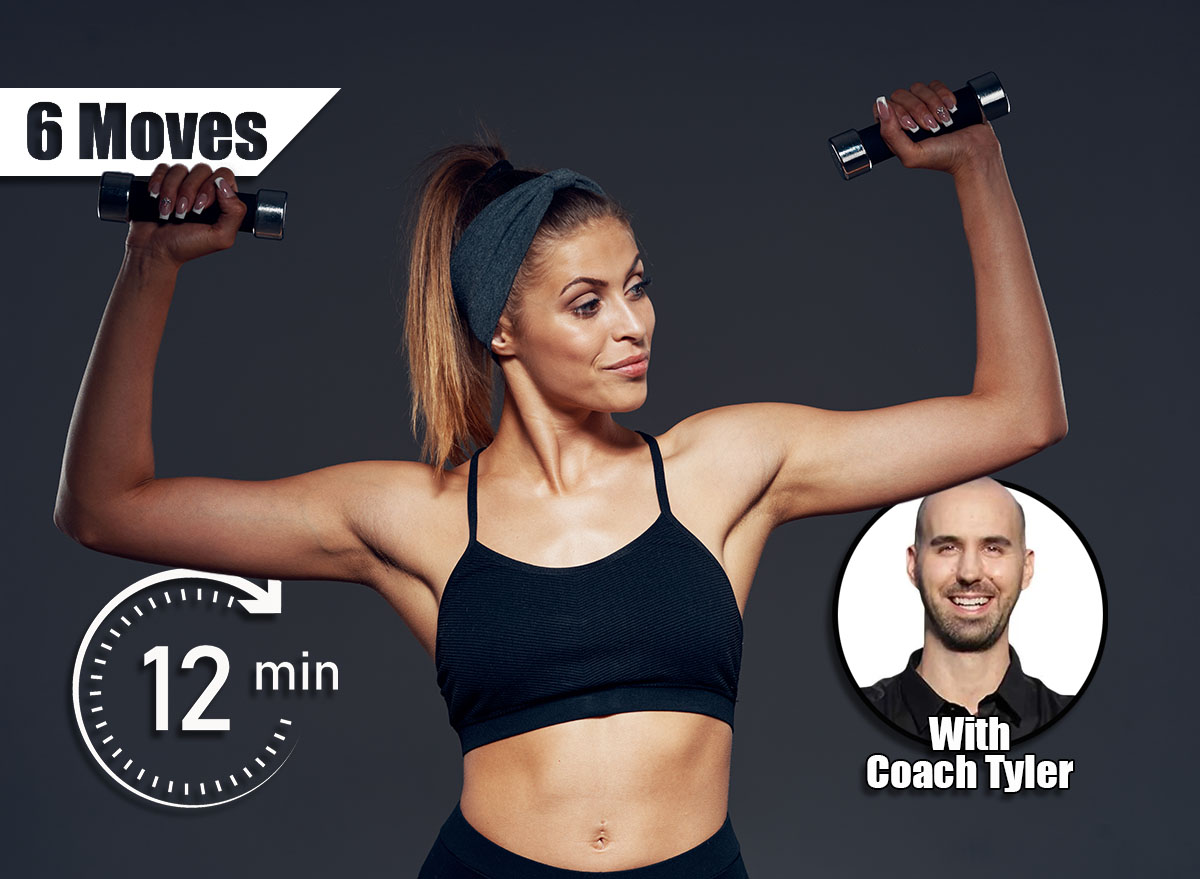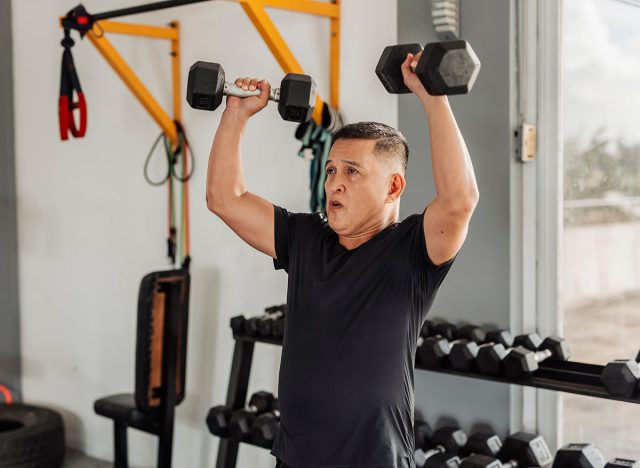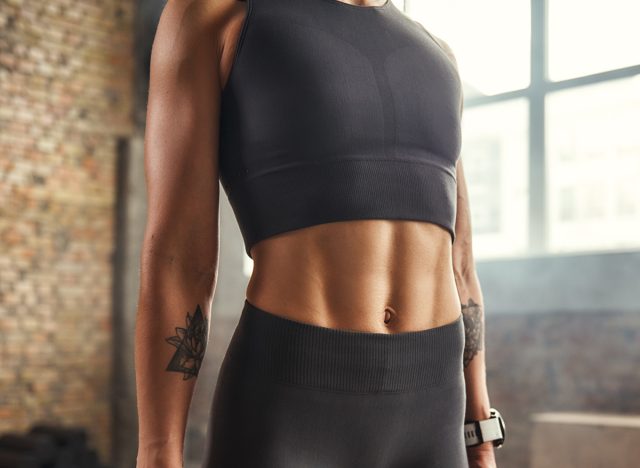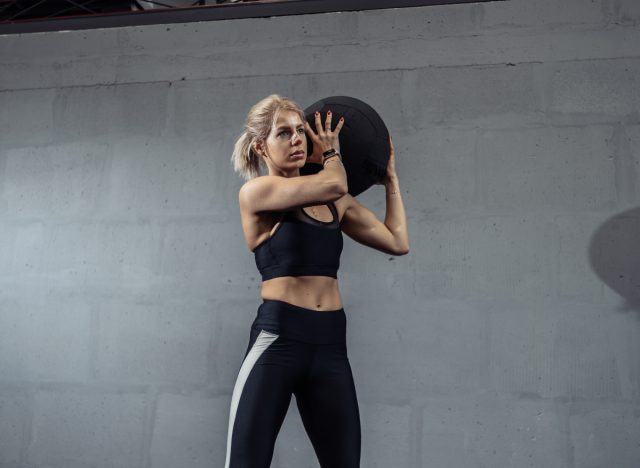6 Best Standing Exercises To Build Lean Muscle After 50 in 30 Days

Building lean muscle after 50 isn’t about pushing your body to extremes. It’s about training smarter, not just harder. Standing exercises recruit more muscles at once than seated or lying-down moves, forcing your core, legs, and stabilizers to work together. This full-body engagement not only stimulates muscle growth but also helps protect your joints and improve balance, which becomes critical as you age. The best part? You don’t need fancy gym equipment, just your own body weight, gravity, and consistency.
By focusing on compound standing movements, you’ll see more carryover into daily life. Think about the way you get up from a chair, climb stairs, or carry groceries, these patterns are built on the same muscles these exercises target. Training them directly means more strength, stability, and independence. When done consistently, you’ll notice you not only look stronger, but you move with more confidence and less fatigue.
Over the next 30 days, these six moves will challenge your body in ways that bring visible and measurable results. We’ll also break down what you can expect every 10 days, so you can track your progress and stay motivated. Start where you are today, focus on perfect form, and you’ll surprise yourself with how quickly you can build lean muscle after 50.
6 Standing Exercises to Build Lean Muscle After 50
Standing Overhead Press

The standing overhead press works your shoulders, triceps, and upper chest while forcing your core to stabilize your entire body. This combination not only builds muscle in your upper body but also keeps your midsection engaged the whole time. Because you’re standing, every rep also challenges your balance and posture, strengthening smaller stabilizing muscles that often get ignored.
How to Do It:
- Stand with feet shoulder-width apart, holding dumbbells at shoulder height, palms facing forward.
- Engage your core and press the weights straight up overhead until arms are fully extended.
- Lower slowly back to starting position.
- Perform 8–12 controlled reps.
Squat to Front Raise
This move blends a lower-body strength exercise with an upper-body lift, engaging your legs, glutes, shoulders, and core all at once. It’s an efficient way to target multiple muscle groups and elevate your heart rate, which boosts calorie burn while building muscle. Because it’s a standing movement, your coordination and stability improve as well.
How to Do It:
- Stand with feet hip-width apart, holding light dumbbells in front of thighs.
- Perform a squat, keeping your chest lifted and knees tracking over toes.
- As you stand, lift the dumbbells to shoulder height with straight arms.
- Lower the weights as you bend into the next squat. Perform 10–12 reps.
Standing Reverse Fly
This movement strengthens your upper back, rear shoulders, and posture muscles, key areas for maintaining an upright stance as you age. It helps counteract the forward slump from sitting or working at a desk, while also improving shoulder stability. You’ll feel this work in muscles you rarely isolate.
How to Do It:
- Stand with feet hip-width apart, holding dumbbells at your sides.
- Hinge slightly forward at the hips with a flat back, arms hanging down.
- With a slight bend in the elbows, lift the weights out to the sides until they reach shoulder height.
- Lower slowly and repeat for 10–12 reps.
Side Step Squat with Curl

This combines lateral movement with a squat and biceps curl, building leg strength, hip stability, and arm definition in one move. Side steps train muscles that traditional forward-and-back exercises miss, reducing your risk of falls and improving mobility. The added curl gives your arms extra work without needing a separate exercise.
How to Do It:
- Hold dumbbells at your sides, feet together.
- Step out to the right, bend into a squat, and perform a biceps curl.
- Step back to the center, lower the weights, and repeat on the left side.
- Perform 8–10 reps per side.
Standing Calf Raise with Shoulder Shrug

This underrated combo strengthens your calves for better walking power and your traps for upper-body posture. It’s especially useful for improving ankle stability and preventing lower-leg weakness that can slow you down after 50. Adding the shrug at the top maximizes time under tension.
How to Do It:
- Stand tall with feet hip-width apart, holding dumbbells at your sides.
- Rise onto the balls of your feet while simultaneously shrugging your shoulders up.
- Lower both your heels and shoulders slowly.
- Perform 12–15 reps.
Standing Wood Chop

This rotational move works your core, shoulders, and legs together, training your body for real-life twisting motions like turning to grab something. It builds power and coordination while also engaging deep abdominal muscles. The standing position forces you to control balance from head to toe.
How to Do It:
- Hold one dumbbell or medicine ball with both hands.
- Stand with feet shoulder-width apart, weight near one hip.
- In one motion, rotate your torso and lift the weight diagonally across your body until it’s above your opposite shoulder.
- Return to the starting position and repeat for 8–10 reps per side.
What to Expect Every 10 Days
Day 10: Your balance and posture start improving noticeably. You may feel less stiffness in your joints and have more stability when walking or standing for long periods.
Day 20: Strength gains kick in, you’ll notice the exercises feel easier, and daily activities like lifting groceries or climbing stairs take less effort. Your muscles will look slightly more defined.
Day 30: You’ll see and feel the difference in your entire body. Clothes may fit better, your midsection feels tighter, and your stamina for other workouts or activities will be higher.
Looking for more easy ways to lose fat? Here’s How Long Your Walking Workout Should Be To Shrink Belly Fat.